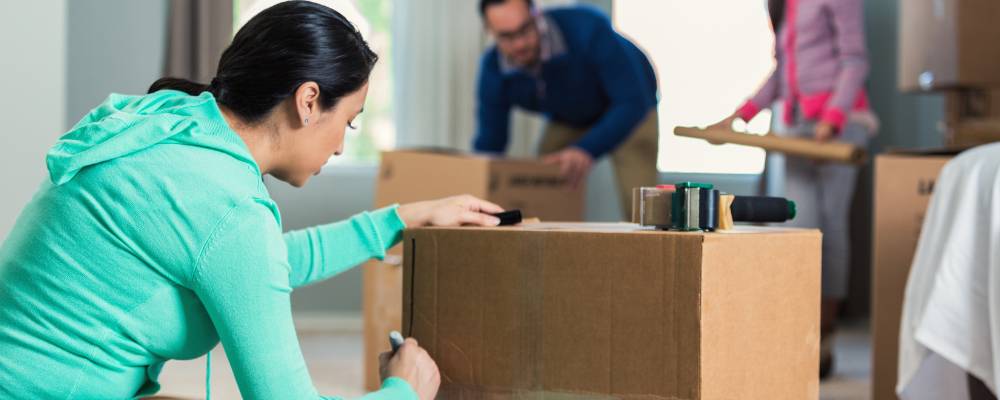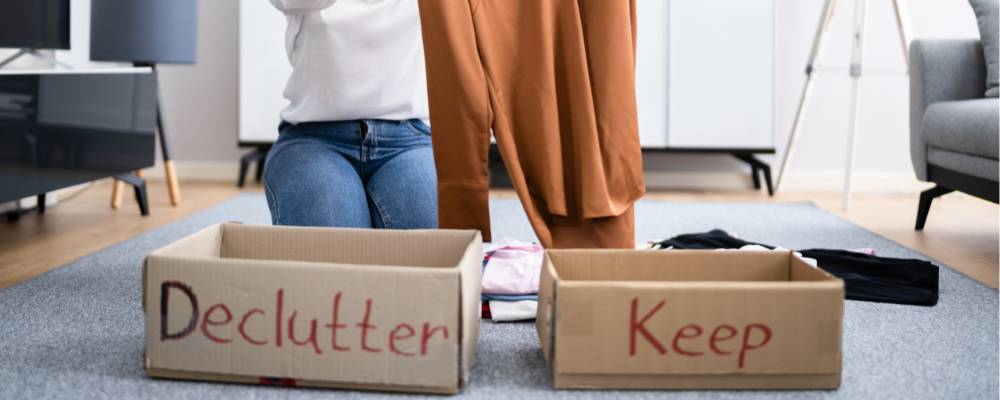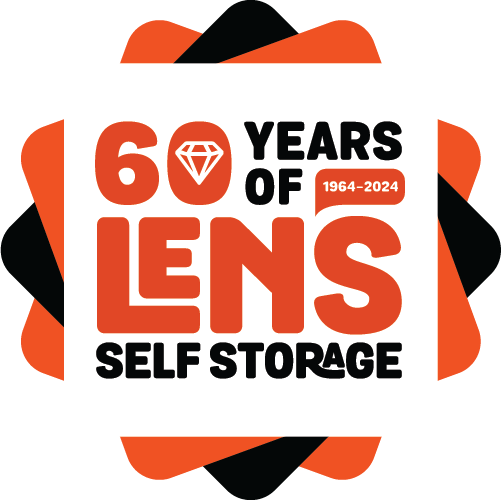We’d all love the chance to simplify our lives and homes, but this is often easier said than done. Mess has a habit of growing, especially when it’s helped along with a demanding work schedule or attempting to remodel a home.
One of the biggest sources of disorder is a simple one; we have too much stuff and we need more space.
We tend to hold onto random items or articles of clothing, wondering whether we'll need them in the future. Half-baked DIY projects we swear we’ll eventually get around to or clothes with missing buttons start adding to our stress. Over time, our homes (and lives) become overwhelmed by clutter, and we need to make some tough decisions, like what to give away.
Let's explore the four box method to tackle the problem of having too much stuff. Ideally, this will help you fight the good fight and bring something resembling order back into your life!
Step 1: Gather and Label Your Boxes
Start by gathering four boxes, with one of them acting as a trash bin. You should preferably use cardboard moving boxes since they will serve as adequate temporary storage. Make sure to print large labels for each box to prevent any accidental mix-ups.
Box 1 — Keep/Put Away
This box should be the smallest since it's meant for items you use daily or weekly. Walk around the room you’re decluttering and see which things are resting where they shouldn’t. Put anything you drop into this box immediately in its rightful spot in your home. If the item belongs in the area you're busy decluttering, skip the box altogether and put it where it belongs.
Box 2 — Donate/Sell
Place valuable items that you no longer use in this box. Before you donate or sell, consider whether others can even use the item in question. For example, if a shirt is ripped or heavily stained, it might be more appropriate to toss it or upcycle it as a rag.
Box 3 — Toss
This box is for items in poor condition which cannot be donated. Before adding an item to this box, consider whether you can donate it. Think twice before trying to sell off items that are essentially litter. That broken flower planter you've been meaning to repair for years, but you know in your heart of hearts you never will? That’s rubbish and it belongs in this box. So say goodbye, and don't look back at the retreating rubbish truck, no matter how much it hurts.
Box 4 — Storage
Be cautious with this box, as it can fill up quickly if you do it wrong. Ideally, this box should contain items you can't part with but don't need throughout the year, such as seasonal decorations and clothing.
Step 2: Declutter One Area at a Time

Firstly, get yourself in the right frame of mind for this part. Keep your goal clear in your mind's eye: living in an organised and efficient home that you aren't ashamed to invite your friends over for book club/wine time.
Consider the following tips when you take up arms against the clutter:
- Start with one room or a small area, and work your way through the rest of the house from here. If a space feels too large or overwhelming, focus on decluttering one corner at a time. This approach should reduce the likelihood of feeling overwhelmed and throwing your hands in the air while walking away.
- Don’t try decluttering your entire house in a single day. Give yourself time.
- Pick up each item and give it your undivided attention. Does it serve you at all? Do you even want it?
Step 3: Ask Questions About Each Item

When examining an item, ask yourself:
- Do I want to keep, donate/sell, store, or discard this item? Which box suits it best?
If the answer doesn't come to you right away, ask yourself:
- How frequently do I use this item, and does it have a place in my home?
- If I didn't already own this item, would I purchase it?
- Does this item have sentimental value to me?
- If I didn't own this item, would I miss it?
- How much could I sell this item for?
- Does this item spark joy, or am I thinking back to a past time it used to bring joy?
These questions should guide you in making decisions. However, if you're still uncertain, remember that letting go of clutter, especially when emotionally attached to an item, is not easy. If you're unsure, temporarily store the item in a separate ‘maybe’ box. If you haven't used anything from that box after a few months, it's time to let go and discard it (if it loves you, it'll find its way back somehow).
Understanding why you're holding onto an item is the first step toward letting it go. If your goal is to declutter, make a conscious effort to avoid acquiring new items. For each new item you bring into your home, try to remove or donate three other things.
Step 4: Empty All Four Boxes, Rinse and Repeat

Once one of the boxes is full, take the time to empty all the boxes (challenge yourself to do it in one trip, go on) before coming back to the room that needs your attention.
- Immediately dispose of the rubbish box by taking it outside to the bin and never look back.
- Set aside items to sell in a separate box and store it temporarily in the garage or office. You can sell these items in a garage sale or on online platforms like eBay or Gumtree. Place the remaining donation items in a box in your car, ready to be dropped off. Don't forget about them for weeks and months, or you'll draw some funny looks from other occupants of the car.
- Sort long-term storage items by category and label them in separate boxes.
- Empty the keep box by promptly putting each item away in its designated location. Fair warning: skipping this step will only create clutter in other areas of your home, like a nasty fungal infection.
- You may need to further organise the items for sale and long-term storage. However, for now, return to the area you were decluttering and begin the process again.
It might look like just a process of pulling things out and putting them in their rightful places, but a tidy home resonates positively with your own mental, physical, and emotional space. And for any boxes marked for storage, Len's Self Storage is a family-run business with friendly and hardworking teams readily available in Edinburgh and Glasgow. We’d be delighted to assist you with anything self storage related!






